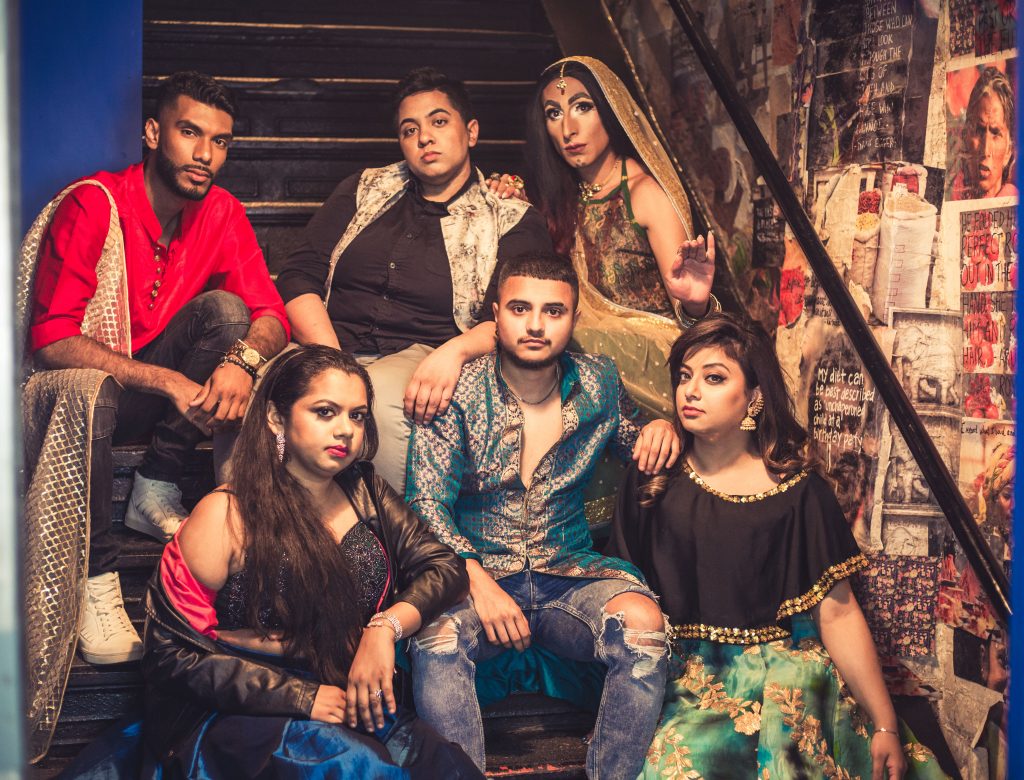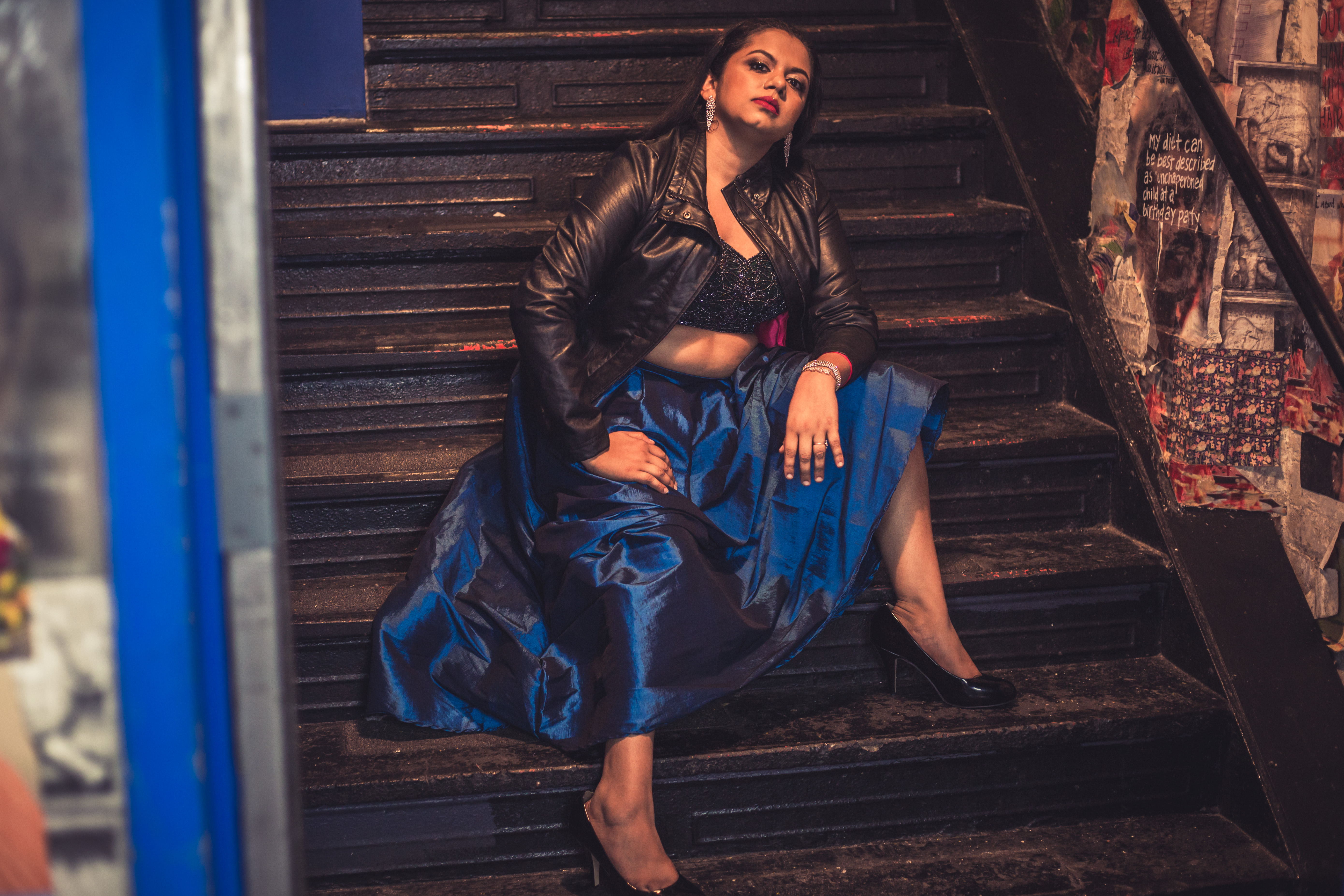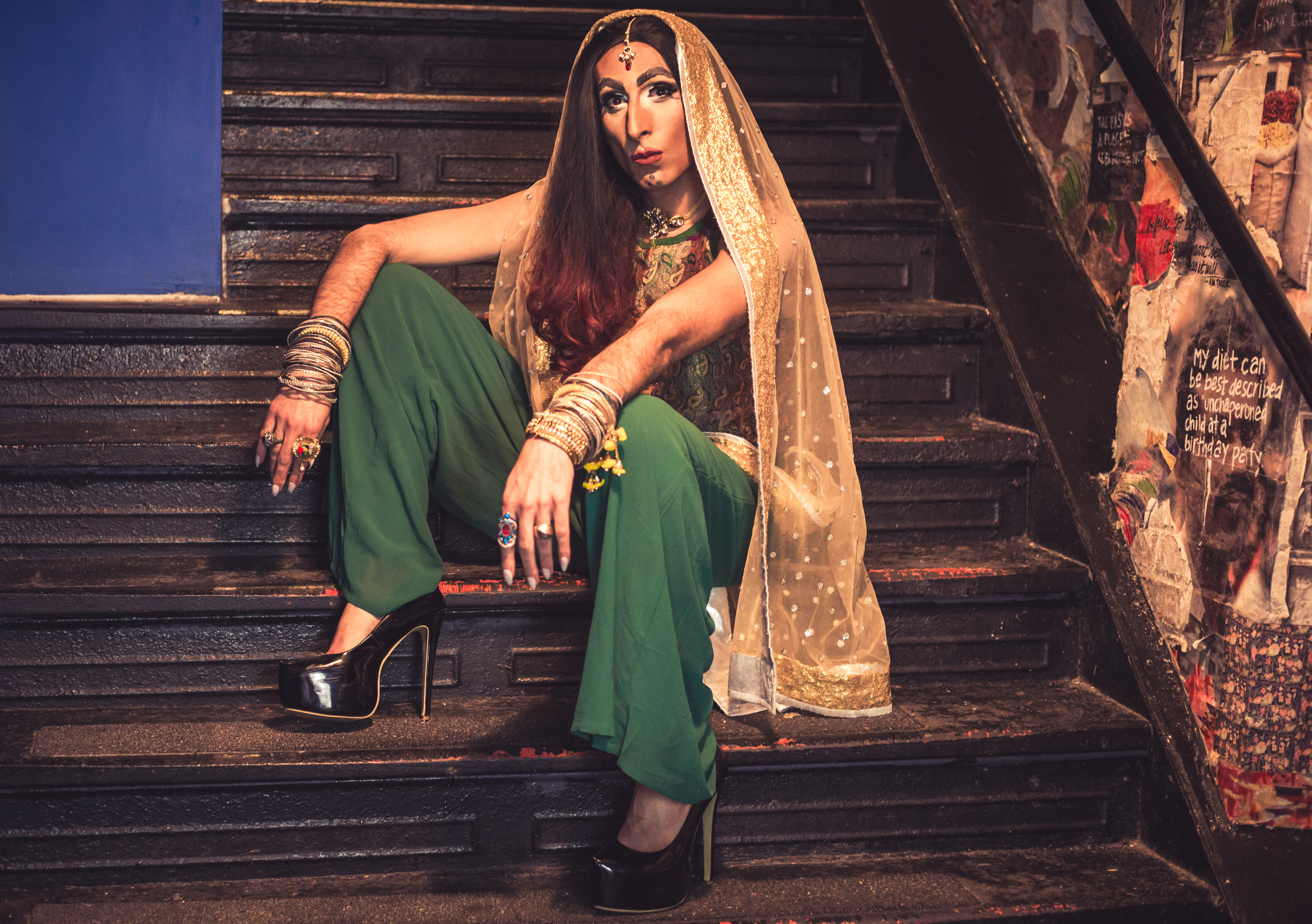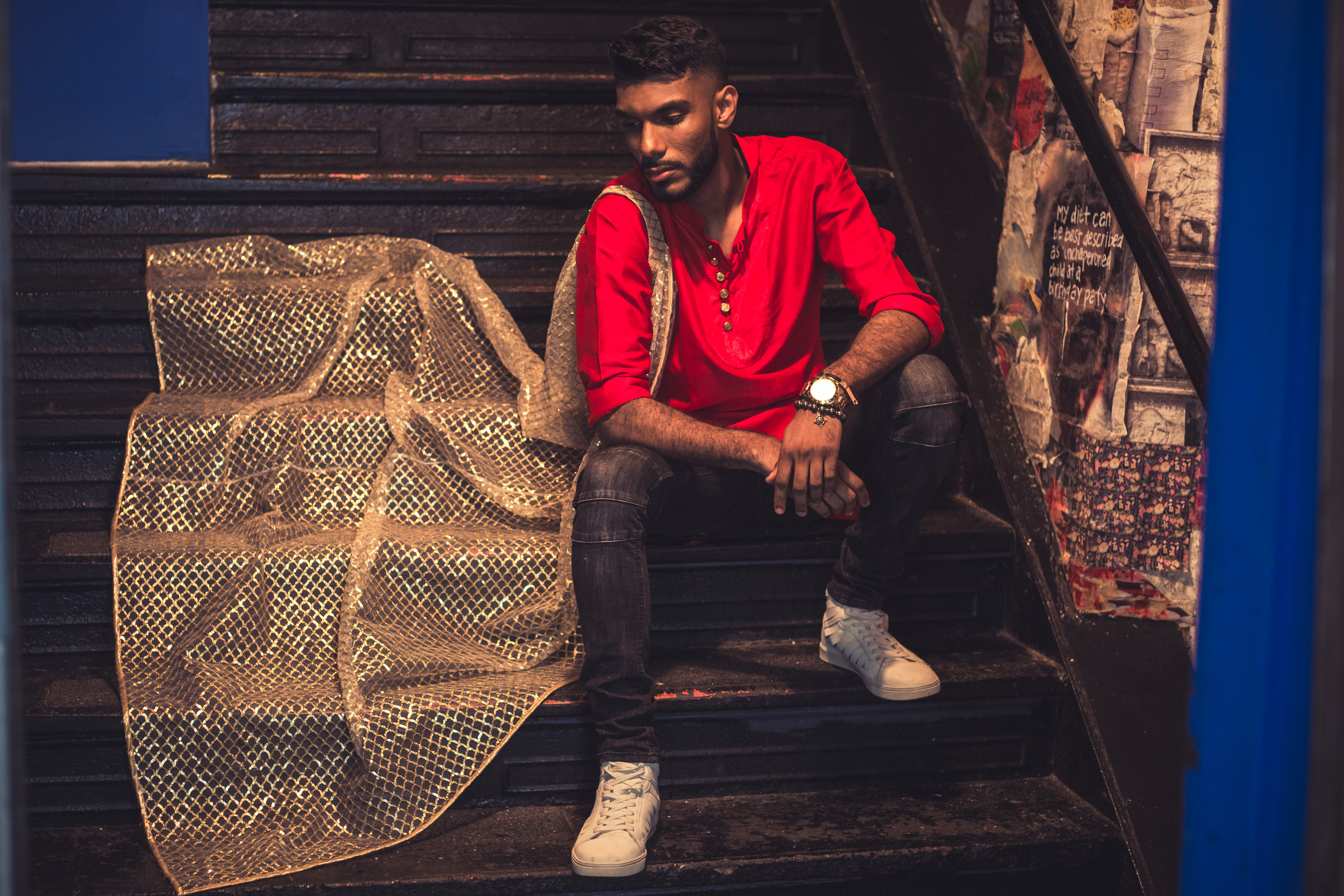
Growing up South Asian, there is no question that clothing and social norms/roles are incredibly gendered. In the diaspora, there is often an attempt to grasp onto the roots and traditions of our motherlands—with the caveat that media representation to reflect our stories and experiences is often lacking.

When it comes to fashion and lifestyle, especially, for South Asian folks who identify within the LGBTQ+ umbrella, our voices are further marginalized. This photoshoot, an extension of Brown Girl Magazine’s Queering Desi—the first South Asian LGBTQ+ podcast—aims to further our visibility on our own terms. When we don’t fit the bill of what is expected of us, as the genders and sexualities that make us who we are, there is a larger struggle—how can we stay connected to the very roots that haven’t yet made room for us?

Entitled “Deconstructing the Gender Binary,” the photo shoot tapped models from our community who identify under various labels—but at the end of the day are just humans. This group, like so many others, grapples with a multitude of factors in their day-to-day lives—culture, safety, violence, and more. This is a humble attempt to begin to challenge what South Asians, and society at large, expect us to “look like.” In these photos, we say: we’re defining who we are, what our culture means to us, and how we carry ourselves in a world that doesn’t often see or hear us.
Hear us. See us. Know us.

“My biggest struggle is, even though I dress feminine, I’m looked at weirdly when I express the masculine side of my personality—because it doesn’t match my clothes or my makeup. But other times, I’m completely mistaken for being a straight person. People might expect me to talk about my attraction to men, or they make straight jokes with me, and I freeze. I do get it: I can play both of them off being bisexual, but I don’t necessarily fit in any one area and that becomes difficult. When you don’t belong to one place, it’s a constant struggle and I don’t fit the idea of what a straight, feminine woman looks like.
I believe that clothing and culture complement one another. In the South Asian culture, straight women dress in a certain way and its assumed that you want to talk about the opposite gender. In such cases, when you’re in the same boat, trying to get men, you might even start to become each other’s competition. But when you’re bisexual, you don’t necessarily fit that bill.
One time, when I was in India, my cousin said, “You’re so pretty, you dress so nicely, you have such a good personality…why are you with women? You could have gotten any man you wanted.” His assumption was that just because I look good and dress nice, it means I should be with a man.
I hope we can live in a world where our dressing and our culture don’t define us. Instead, people actually listen and ask and want to know who you are, versus judging you by your cover, like a book.” —Reema Tharani

“I’m a 22-year-old trans male. I’ve been taking testosterone now for a little over two years, but I have known for as long as I could remember that the body I was born in did not align with how I felt. I went through many phases of labelling myself until I learned that there were other people out there just like me. I did not struggle in coming out or letting anyone know how I felt, which I feel very grateful for. Everyone in my life has been extremely supportive, and as my journey on testosterone began and progressed I began to fall in love with the person in the mirror too.
My hopes for the future are to get bottom surgery (phalloplasty) and continue to become the happiest and greatest version of myself. My hopes for whoever reads this is that you realize that you can literally be whoever you want and do anything that you want. This life is yours.” —Sanan Surani

“I am a woman who lusts for and loves all kinds of people and experiences, and also feels complete and content when alone.
As a South Asian woman, I have struggled both with embracing my masculine side and with forging a femininity that is not rooted in the bridal, the decorative, the maternal, or the familial, but simply expresses my complexity as a human being. This has become more urgent to me as, two days after this photo shoot, I turned 35, an age at which women are often judged in terms of their relationship or motherhood status (or seen as declining in sexual value).
For this shoot, I offered to be styled in either masculine or feminine clothing; the clothing ended up being traditionally femme, but during the shoot, out came a correspondingly fierce and glowering side that I dubbed “my inner mob boss.” Even when dressed femme, I never want to feel demure, frilly, infantile, or just “one of the girls.” I need a flourish of the dominant and emphatic. The boss may look baby-faced, but she will ice you without hesitation—or have one of her henchmen do it for her (in everyday life I’m much safer to be around).
When I’m not in South Asian clothes, my Western wardrobe is eighties-influenced: bold, color-blocked, campy, striped, a bit egotistical, but self-aware. I also love costuming and theater—those transformations, too, reflect my desire to live as my own kind of woman, who matters even if she is single, independent, and hard to pin down: a woman in whom the masculine and feminine protect, reinforce, and amplify each other.
I do not value one side of myself over the other; I just know that each long for the other in order to feel complete.” — Janani Sreenivasan

“Hey everyone this is Lal Batti, your Bollywood Tawaif Drag Queen.
I’ve never really had a problem when it comes to being a drag queen, for some reason people love me. I’m just here for that paper money, hunny, and as long as you keep leaving it in my “Matki” (bucket) we won’t have any issues. But in terms of struggles, I always get that one person who has to give their little input, ‘Beti you should shave your chest, you would look so much better.’ To that, I respond, ‘Aunty, it’s 2018. Hair is in, and by the way, your moustache is wonderful, also those pimples from plucking your chest hair are not.” I’m cracking up while writing this, ‘but you do you girl, you do you, #notjudging, but also Neem toothpaste works wonders, or try apricot scrub after shaving/plucking.”
In the future, I hope the dollar bills turn into 1 million dollar bills, and I hope my wigs last more than two shows, and I want world peace!
Jeeti Ra Hoe!” — Lal Batti

“Formally, I identify as human; however, my sexual orientation is bisexual. Although I am extremely proud of who I am and how far I have come, I still have many struggles like anyone else. Most of my family and childhood friends are not accepting of me and that has been my biggest struggle thus far. I do not care for others’ opinions but to feel distant from the ones I love hurts me beyond imagination.
My hopes for the future is understanding and acceptance. I hope that one day, people can accept that we’re all human first and foremost and the way we express our identity should be accepted regardless of what society’s version of “normal” is.” — Bryan Salvadore





